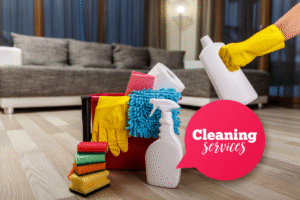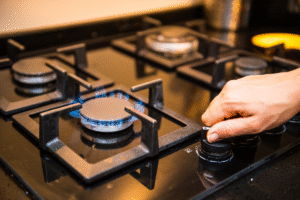Navigating rental property cleaning standards is a key challenge for landlords
And mistakes can be costly at the Tenancy Tribunal.
Many landlords lose bond disputes because they misunderstand rental property cleaning standards, especially the difference between landlord and tenant responsibilities. To address this issue, this article clarifies what ‘reasonably clean and tidy’ means, explains how the standard you set at move-in affects what you can expect at the end of the tenancy, and shows how leading by example protects your investment.
Drawing on my 22 years of experience as a property investor and as a property manager since 2009, I frequently encounter the same complaint from tenants about their previous rentals:
“The last place wasn’t clean when we moved in.”
Those same landlords? They fought over bond deductions for cleaning at the end.
This double standard costs you money at the Tenancy Tribunal.
It’s a failure of the EEL Formula:
Education (continually educating tenants when necessary), Expectation (clearly state your standards), and Lead by Example (demonstrate the standard yourself). Today—Lead by Example—where most landlords fail.
Here’s What Happens:
A landlord hands over a rental with dusty skirting boards, wall marks, grime in the bathroom, and dirty appliances.
The tenant thinks: “I guess this is the standard.”
End of tenancy? That landlord wants it spotless. Wants bond deductions.
Big mistake.
The Legal Reality:
Section 40 of the RTA: Tenants must leave properties reasonably clean and tidy.
But “reasonably clean and tidy” is grey. It’s subjective.
The standard can depend on the condition at the start.
Hand over a property that’s just “okay”? You’ll generally get back “okay.”
Hand over a property that’s been professionally deep cleaned? That sets the benchmark.
Every few years, landlords need that professional deep clean. It’s your business expense—like maintenance and repairs.
The problem? Landlords are trying to make tenants pay for what’s actually the landlord’s responsibility.
That’s when you lose at tribunal.
Two Types of Cleaning:
Tenant responsibility: Reasonably clean and tidy. Remove rubbish, clean visible dirt, wipe surfaces.
Landlord business expense: Professional deep cleaning. Carpets, behind appliances, presentation-level for the next tenant.
Professional deep cleaning is YOUR cost.
Here’s the Magic:
When landlords present rentals to a very high standard—professionally cleaned, immaculate—something happens. 
Most tenants go the extra mile to return it the same way.
They see the standard. Feel the respect. Match it.
That’s Lead by Example in action.
Bottom Line:
Want your property returned clean? Hand it over clean.
Smart business. Avoids tribunal disputes. Builds respect.
Making life easy for landlords, what we do
Learn more about the EEL Formula here →




No comment yet, add your voice below!